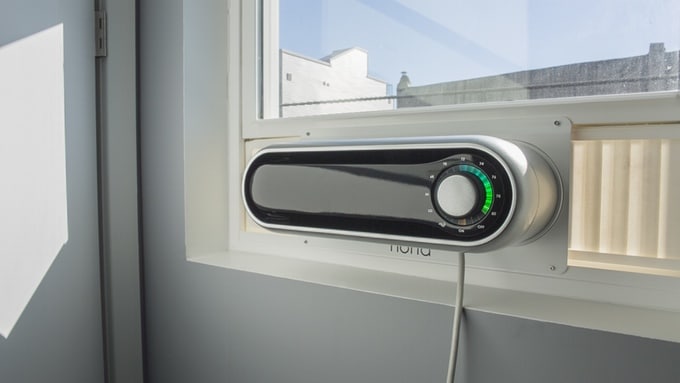Window air conditioners were developed in USA. Today they are very popular in North and South America, Taiwan, the Middle East. Today window conditioners are the main competitor for split-systems of Japanese companies, which are the leaders of this segment.
The window air conditioner is performed as a monoblock that is the main difference from the split system. It uses a traditional operation principle. The compressor provides refrigerant circulation between the external and internal units that are located in single housing. The refrigerant gives off heat in the outdoor unit and is condensed into liquid. In the internal unit, it’s converted into gas and cools the air that is directed into the room.
Window monoblocks have a power from 1.5 to 8 kW that provides effective cooling. These air conditioners are often used when the outdoor unit of the split system can not be installed.
PROS
These conditioners have significant advantages.
– The cooling unit in the front-third is located in the room. The back one-third is outside. As a result, the monoblock occupies little space in the room.
– Window monoblocs are the only models in the budget segment with function of air ventilation. This feature is not available in the budget split-systems, mobile air conditioners and VRV-VRF systems. Ventilation provides the constant influx of fresh air in the room.
– The service life of window air conditioner is longer compared to the split-system.
– Lack of detachable joints in the freon pipeline is a significant advantage, completely eliminating the risk of its leakage.
– They have a high efficiency and good maintainability.
– Window air conditioners are significantly cheaper than split systems.
– They are easy to install and maintain.
Window monoblocs is cheaper compared to mobile models by about 30%. However, the cost of installation is around 20%. But many users install the conditioner by yourself due to ease of its mounting.
CONS
Unfortunately, shortcomings are also present.
– They are mounted in windows and occupy their useful area, reducing the amount of transmitted light.
– Using curtains on windows with air conditioning disrupts the air circulation.
– These models are noisier compared to the split-systems.
– Monoblock forms air drafts in radius of a few meters.
– Control is less automated, and cooling is less efficient compared to split systems.
– The conditioner width can not exceed the window width. This aspect limits their use in narrow window openings. But today, the market offers a wide range of models for windows of different shapes.
Some users sometimes install the monoblock on the thin wall with thickness not more than 8-12 in. Such mounting is often used in some tropical countries.
Of course, these features affect the choice of the optimal air conditioner.
This video demonstrates the possibilities of an innovative window air conditioner.
